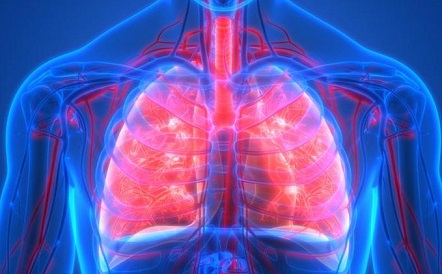Spanish Study Shows Persistent Pulmonary Abnormalities Even At 18 Months After SARS-CoV-2 Pneumonia
Nikhil Prasad Fact checked by:Thailand Medical News Team Mar 05, 2024 1 year, 1 month, 3 weeks, 2 hours, 59 minutes ago
COVID-19 News: As the world grapples with the ongoing impact of the SARS-CoV-2 pandemic, the medical community is faced with the challenge of understanding the long-term consequences of severe pneumonia caused by the virus. After more than three years since the initial outbreak, questions linger about the extent to which survivors may experience lasting pulmonary sequelae or develop progressive fibrosing interstitial lung disease (ILD).
 Spanish Study Shows Persistent Pulmonary Abnormalities Even
Spanish Study Shows Persistent Pulmonary Abnormalities Even
At 18 Months After SARS-CoV-2 Pneumonia
Imaging studies have played a crucial role in documenting the evolution of SARS-CoV-2-induced pneumonia, from its acute manifestations to later stages. Ground-glass opacities, crazy-paving patterns, and alveolar consolidations have been observed during the acute phase, reflecting patterns consistent with organizing pneumonia, acute fibrinous and organizing pneumonia, or diffuse alveolar damage. Complications such as pulmonary embolism, pneumothorax, pneumomediastinum, and infections have also been reported.
Despite the initial severity of the condition and variations in follow-up duration, persistent radiological abnormalities on high-resolution computed tomography (HRCT) commonly include ground-glass opacities, reticulation, subpleural curvilinear lines, parenchymal bands, and fibrotic interstitial abnormalities. However, the clinical course of SARS-CoV-2-induced pneumonia varies widely, raising questions about the persistence of symptoms, functional impairments, and radiological abnormalities. This
COVID-19 News report delves into a Spanish study conducted at the Hospital Universitario La Princesa, Universidad Autónoma de Madrid-Spain, and Instituto de Investigación Sanitaria del Hospital Universitario La Princesa, Madrid-Spain, aiming to shed light on the lingering pulmonary effects 18 months post-infection.
Patients and Methods
The prospective cross-sectional study included a cohort of 772 patients who underwent post-COVID-19-specific respiratory medicine clinics after hospital discharge. Of these, 90 patients were referred to the specialist ILD clinic due to persistent radiological and functional abnormalities or ongoing respiratory symptoms. After excluding two patients with suspected pre-existing ILD and 57 with near-total resolution of abnormalities, the final cohort consisted of 31 patients, 34% of the initial group, with persistent lung abnormalities on HRCT 18 months after infection.
Results
Among the 31 patients included in the study, 65% were men, with a mean age of 67 years. A notable 58% had been admitted to intensive care units during the acute phase, with a mean hospitalization time of 38 days. The time between pneumonia onset and the follow-up HRCT averaged 20.34 months. Ground-glass opacities were present in all 62 readings, while reticulation, subpleural curvilinear lines, parenchymal bands, traction bronchiectasis, displacement of vessels/fissures, and honeycombing were observed in varying frequencies.
Pulmonary function testing at 18 mont
hs post-acute episode revealed a mean forced vital capacity (FVC) of 92% of predicted value, with 35.4% of patients showing FVC < 80% of predicted value. The mean diffusing capacity of the lungs for carbon monoxide (DLCO) was 71% of predicted value, with 70% of patients exhibiting DLCO < 80%. Statistically significant relationships were observed between total lung function abnormalities on HRCT and FVC, as well as a trend towards significance with DLCO. Ground-glass opacities correlated significantly with FEV1/FVC, while reticulation showed significant associations with multiple pulmonary function parameters.
Discussion
The study findings underscore the persistent nature of pulmonary abnormalities in a subset of patients recovering from SARS-CoV-2-induced pneumonia. The prevalence of these abnormalities ranges from 30% to 39%, influenced by factors such as the initial severity of the condition, duration of follow-up, and the specific patient population under investigation. Older patients, in particular, appear more prone to interstitial lung sequelae.
Conclusions
Approximately 11% of patients with SARS-CoV-2-induced pneumonia who required hospitalization and/or admission to respiratory intensive care exhibit long-term pulmonary abnormalities. Among these patients, 34% continue to manifest interstitial pulmonary abnormalities beyond 18 months post-acute pneumonia. Ground-glass opacities emerge as the most frequent abnormality on HRCT, with fibrotic abnormalities present in over 50% of cases. Despite these findings, the impact of persistent interstitial abnormalities on patient outcomes appears limited, providing crucial insights into the long-term consequences of SARS-CoV-2 pneumonia. Continued research and specialized follow-up protocols are essential to comprehensively address the evolving challenges posed by this novel viral infection.
The study findings were published in the peer reviewed journal: Radiología.
https://www.sciencedirect.com/science/article/abs/pii/S2173510724000375
For the latest
COVID-19 News, keep on logging to Thailand Medical News.
